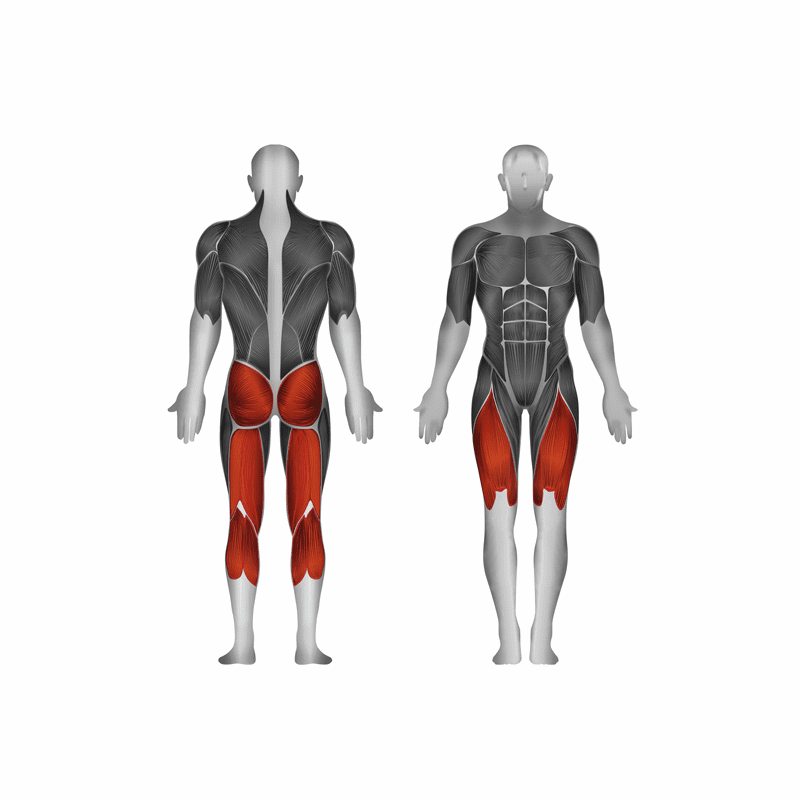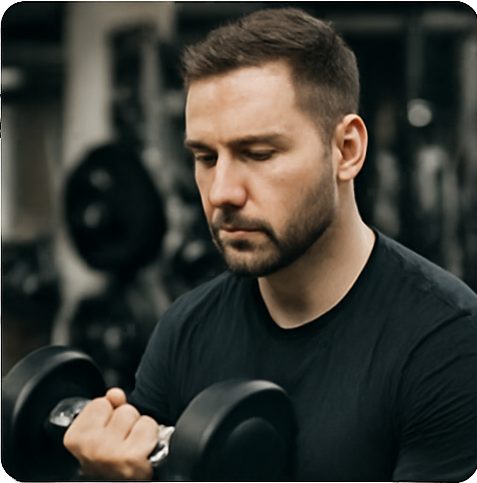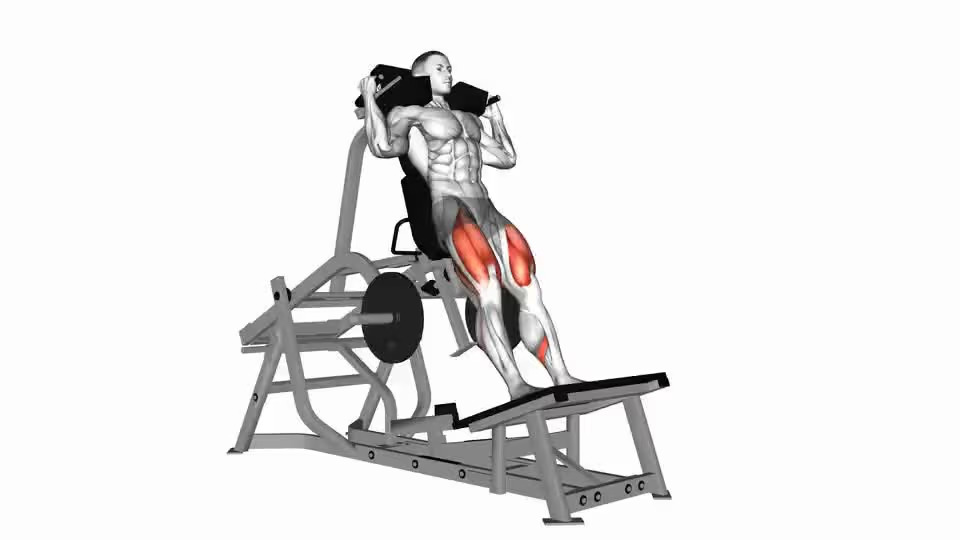The first time I saw the leverage squat machine, I honestly had no clue what it did. It looked intense — all steel arms and pads — but also kind of inviting, like “hey, I won’t wreck your spine.” So I gave it a go.
I was honestly just sick of barbell squats messing with my knees and lower back. Don’t get me wrong, I love traditional squats. But after years of training, my joints needed a break without losing the gains.
So I started poking around for machines that felt like squats, but didn’t carry the same risk. Eventually, I ended up at the leverage squat. And man, I did not expect to like it this much.
It felt strong. Stable. Clean. No sketchy form breakdown or weird angles. Just straight-up leg work — the kind that makes you sore for days but in a good way.
That was the beginning. From there, I started comparing it to every other lower body machine in the gym. Because if you’re going to commit floor space to a big machine like this, it better be worth it.
What a Leverage Squat Machine Is And Why It Feels So Good
The leverage squat machine is basically a squat-focused leg machine that gives you that heavy-leg-day feel without trashing your joints. Think: squat motion, but way more controlled and way less scary on the knees or back.
First time I stepped into one, I thought, “Is this a hack squat knockoff?” But nah — it moves differently. You load the plates, get your shoulders under the pads, and press through your feet. The machine gives you a guided path, but it’s not totally locked like a Smith machine. You still gotta work.
The movement felt smooth. Not robotic, just controlled. I could sit deep, stay balanced, and not worry about folding in half like I sometimes do with barbell squats. And the burn? Immediate.

Here’s how it hit my muscles:
- Quads were on fire — no surprise there
- Glutes were active, especially at the bottom
- Hamstrings pitched in, depending on how I placed my feet
- Core was involved a bit, but not the focus
And here’s the part that really sold me:
What I liked:
- Felt way safer on my joints (huge win)
- I could go deeper without stress
- Still gave me a real squat feel
- Perfect when I wanted to focus on hypertrophy
What I didn’t love:
- Foot placement matters — wrong angle, and it feels off
- You’re kinda stuck with whatever path the machine gives
- Not as flexible as doing stuff with a barbell
All in all, it’s not a barbell replacement, but it’s damn good for piling on leg volume without putting your spine on the chopping block.
How the Leverage Squat Machine Stacks Up Against Other Leg Machines
I’ve tested a bunch of lower-body machines in commercial gyms. When I started using the leverage squat machine, I realized it kinda sits in the middle — gives you that squat feel, but without the stress. Still, I kept comparing it to the other big names: hack squat, leg press, pendulum squat, Smith machine, etc.
Here’s how they really stack up — no fluff, just what I felt:
| Machine | Joint Friendly | Muscle Feel | Squat-Like | What Stands Out |
|---|---|---|---|---|
| Leverage Squat | ✅ Best for joints | ✅ Balanced hit | ✅ Very much | Smooth path, low back stays chill, feels natural |
| Hack Squat | ⚠️ Knee pressure | ✅ Quads burn hard | ❌ Not quite | Can feel jammed up in the hips, foot angle is tricky |
| Leg Press | ✅ Easy on joints | ✅ Pure push power | ❌ Nope | Great for loading up, but doesn’t mimic squats at all |
| Pendulum Squat | ✅ Super joint-friendly | 🔥 Huge tension | ✅ Close feel | Crazy quad burn, but $$$ and takes a ton of space |
| Smith Machine Squat | ⚠️ Mid-range support | 🤷♂️ So-so feel | ❌ Meh | Fixed path feels awkward, not everyone’s favorite |
Who the Leverage Squat Machine Really Shines For
If you’re training in a commercial gym and need something that’s:
- Safer than barbell squats
- Still lets you hit full range
- Easier on knees and lower back
- Solid for hypertrophy work
Then the leverage squat machine is a no-brainer.
It’s not here to replace free weights altogether. But on high-volume leg days, for athletes recovering from injury, or anyone needing a stable squat pattern that spares the spine? This machine absolutely earns its spot.
Related articles:
Power Squat Machine Starting Weight: What You Should Know
Power Squat Machine: Level up Leg Day Gain
FAQs about Leverage Squat Machine
A leverage squat machine is designed to provide support and stability during squat exercises, focusing primarily on lower body strength. The machine guides the user through a controlled squat motion, targeting key muscles like the quadriceps, hamstrings, glutes, and calves. By using a lever-based system, the machine ensures that the user maintains proper form throughout the movement, which helps reduce the risk of injury compared to traditional squats. The adjustable resistance on a leverage squat machine allows users to progressively increase the intensity of their workouts, making it suitable for both beginners and advanced lifters. Additionally, the design of the machine offers support to the back and joints, alleviating some of the strain commonly associated with free-weight squats. Overall, the leverage squat machine is an effective tool for building strength, improving posture, and increasing muscle mass in the lower body.
Yes, the squat machine really works and can be an effective alternative to traditional free-weight squats. It targets the same lower body muscles, including the quadriceps, hamstrings, glutes, and calves, while offering enhanced stability and control during the movement. The key benefit of using a squat machine is that it helps users maintain proper form, which is especially beneficial for beginners or those recovering from injuries. Unlike free-weight squats, which require more balance and coordination, the squat machine guides the user through a fixed path, reducing the risk of improper form and injury. It also allows for gradual progression with adjustable resistance, making it suitable for various fitness levels. While it may not engage stabilizer muscles as much as free-weight squats, it still provides an excellent workout for muscle growth and strength development.
Smith machine squats and leverage squats both target the same muscle groups, including the quadriceps, hamstrings, glutes, and calves, but they differ significantly in how they function. A Smith machine uses a fixed barbell that moves along vertical or slightly angled rails, providing stability and support during squats. The main difference is that the Smith machine does not allow for much natural movement, and users must rely on the fixed path of the bar. This can limit the activation of stabilizer muscles and affect the range of motion.
In contrast, the leverage squat machine uses a lever system to guide the squat movement, offering a more natural arc for the body. The user’s body moves along a predefined path, but with less restriction than a Smith machine, allowing for a slightly more natural squat motion. Additionally, leverage squat machines typically place more emphasis on targeting the legs and glutes, offering a controlled squat experience with better engagement of the lower body muscles. While both machines offer stability and safety, leverage squats tend to provide a more dynamic and natural movement, making them ideal for those focusing on leg development.
The weight of a leverage squat machine without any plates can vary depending on the specific model and design, but it generally weighs between 200 to 400 pounds (90 to 180 kg). This weight includes the frame and lever system, which are built to support heavy resistance during exercises. While the machine itself is substantial, its weight is designed to ensure stability and durability, especially in commercial gyms or environments with high usage. The added weight of plates can increase the overall load, making it suitable for users who are looking to gradually increase resistance for muscle development. When purchasing or using a leverage squat machine, it is essential to consider the base weight along with the capacity for additional plates to ensure it meets your workout needs and space requirements.

Hi, I’m the editor here at Leadman Fitness. We’re a manufacturer focused on producing top-quality barbells, plates, kettlebells, dumbbells, and strength training gear. I’ve been into sports and fitness for years, and I know my way around all kinds of gym equipment—both from using it and helping create it.
I spend a lot of time understanding the real problems people run into in the gym—whether it’s beginners trying to pick the right gear or experienced lifters looking for something more durable. I stay in close touch with our production team and talk directly with other equipment makers, so we’re always improving based on what real lifters and coaches are looking for.
What I share comes from hands-on experience—stuff that actually helps people train better, not just in theory, but in real gyms.
